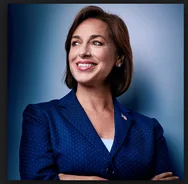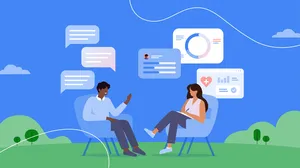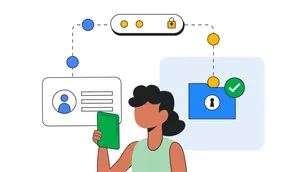A new commitment to digital wellbeing for kids and teens

Read this post in Spanish // Blog en español aquí.
The internet has helped millions of kids learn, connect and prepare for their futures in ways that were impossible even a decade ago. As more young people come online and new innovations like AI are introduced, people are asking important questions about how they can help kids — from preschool to high school — create and maintain safe and healthy relationships with technology.
Since 2019, searches for “teen mental health” have more than doubled — reaching an all time high last year. In 2023, people all over the world were also looking for information on "parental controls," "screen time" and “AI for kids” more than ever before. Questions about technology are top of mind for families, and for Safer Internet Day we’re sharing new commitments, tools and ongoing product improvements to help kids and families create safe, healthy and balanced relationships with technology.
Collaborating with others
At Google, everything we do for kids, teens and families is created to empower, designed to respect, and built to protect. Through our years of experience building Google products tailored for kids and families, we’ve created strong relationships with experts across child development, online safety and mental health fields.
Today, we’re continuing our legacy of this commitment by providing $20 million from Google.org to support work that promotes digital wellbeing, mental health and online safety for kids of all ages. We’ll be announcing all of the organizations receiving support in the coming months, but we’re thrilled to kick things off with a few allies who’ve been helping kids and families for generations:
- Highlights Magazine. For over 75 years Highlights for Children has helped kids become their best selves by helping them channel their curiosity, creativity, caring and confidence. Today, we’re excited to be releasing a special edition of Highlights Magazine based upon Google’s Be Internet Awesome curriculum. Through the fun, engaging and educational puzzles, crafts and short stories that have made Highlights a staple, we’ve collaborated to bring Be Internet Awesome’s mission to help kids be safe, smart and confident online explorers to life. We also know that access and distribution are key to ensuring these resources reach families and kids. So for this edition, beyond reaching Highlights' more than one million regular subscribers, we’re providing an additional 250,000 copies to local Highlight’s partners — schools and organizations like Save the Children and Reading is Fundamental — which serve lower income communities. Our support is also enabling Highlights to offer a free digital version of the magazine and supplementary materials at Highlights.com/InternetSafety.
Taking awareness and access one step further, in the coming months we plan to partner with Boys & Girls Clubs of America, the nation’s largest youth development organization, to host events with interactive and educational games and activities based on the Highlights and Be Internet Awesome resources at select Boys & Girls Clubs across the country.
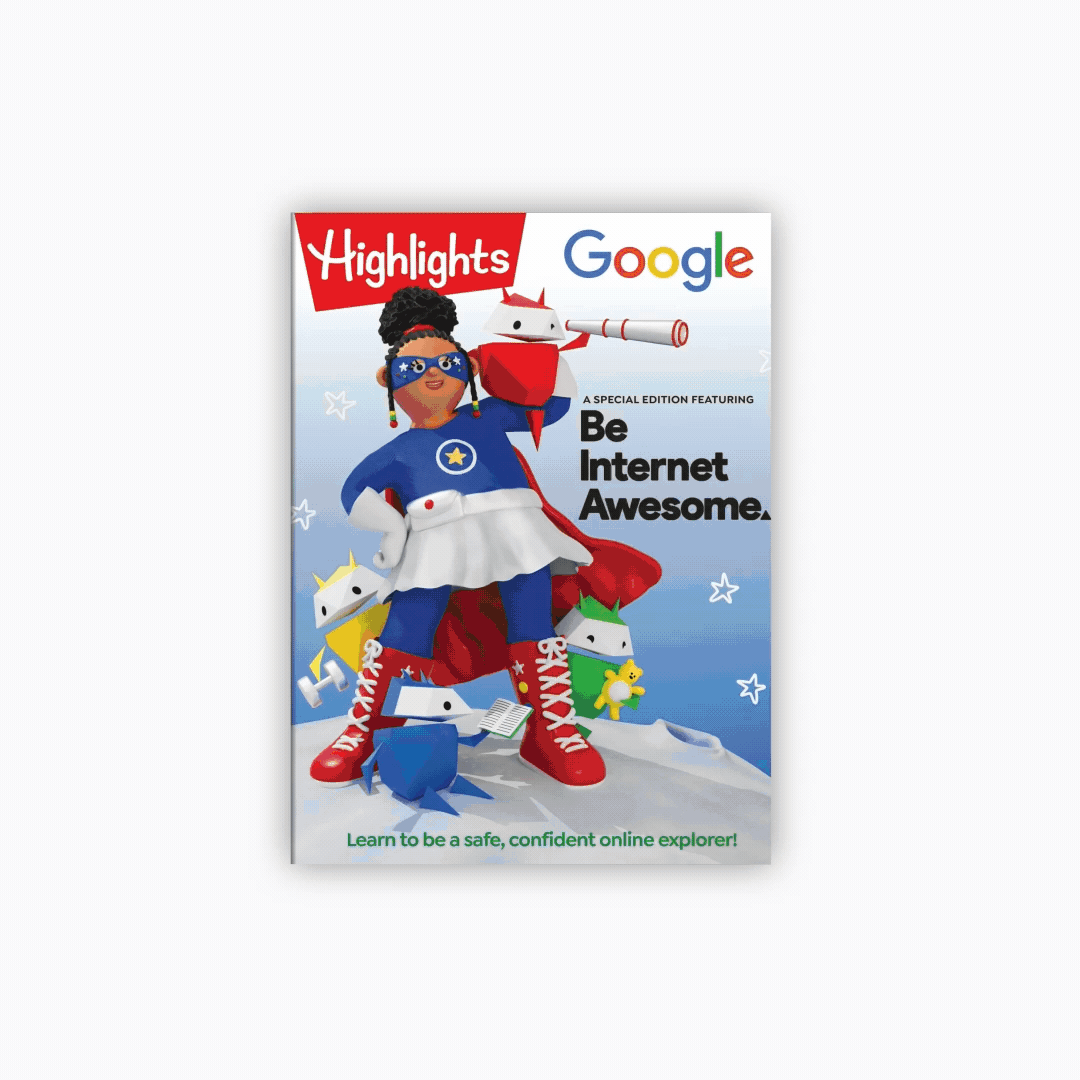
- Sesame Workshop. Over the next year, Sesame Workshop — the global nonprofit that helps kids grow smarter, stronger and kinder — will research and create new videos and digital resources, featuring the Muppets of Sesame Street, to support digital wellbeing and help children and families implement strategies for healthy, productive use of digital media and AI, and strengthen emotional well-being and relationships with family and community.
Helping families stay safe and find the right balance with technology
We’re also continuing to invest in more ways to help parents and caregivers find the right balance with technology. Through Family Link, we provide easy-to-use settings and tools to understand how children are spending time online, set screen time limits, guide them towards age-appropriate content, and manage app permissions with a few quick clicks.
More recently, we’ve been working on additional ways to make it even easier for parents to manage their family’s accounts, update settings and share information securely:
- Simplifying how parents find and update Family Link: Parents who are logged-in to their Google Accounts simply have to search for “parental controls,” and a dedicated information box will appear listing the accounts they supervise and quick links to each supervised account’s settings.
- Enabling passwords to be securely shared among families: Accounts that are part of a family group will soon have the option to share usernames and passwords for a particular website or service directly from Google Password Manager. Whether two members of a family are coordinating with daycare through a single account, or a child is letting a parent access their school assignments, sharing passwords securely has never been easier.
- Streamlining SafeSearch settings: While SafeSearch filtering is on by default for users under 18, for adults, we’ve made it simpler to control SafeSearch settings — for example, to turn on SafeSearch blurring or filtering — by making these settings directly accessible on the Search results page for relevant searches.
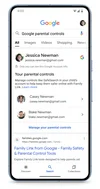
Continued investment in teen digital wellbeing on YouTube
In addition to empowering parents with tools and controls, we’ve rolled out default features for teens on YouTube that focus on digital wellbeing. This includes our Take a Break and Bedtime reminders which are available globally and have been revamped to be more visibly prominent and appear more frequently. Last November, we also announced that we would limit recommendations in the U.S. of content that could be problematic for some teens if viewed repetitively — like videos that compare physical features and idealize certain types over others. We’ll introduce these updates to more countries in the coming months.
YouTube also supported a new report developed by the World Health Organization (WHO) and British Medical Journal (BMJ) which outlines principles for appropriate mental health content for teens and provides guidance on communication strategies for that content. You can learn more about these updates in this Safer Internet Day blog from YouTube.
All of these efforts build on our continued commitment to help keep kids and families safer online. To learn more about our products and practical resources visit families.google.
